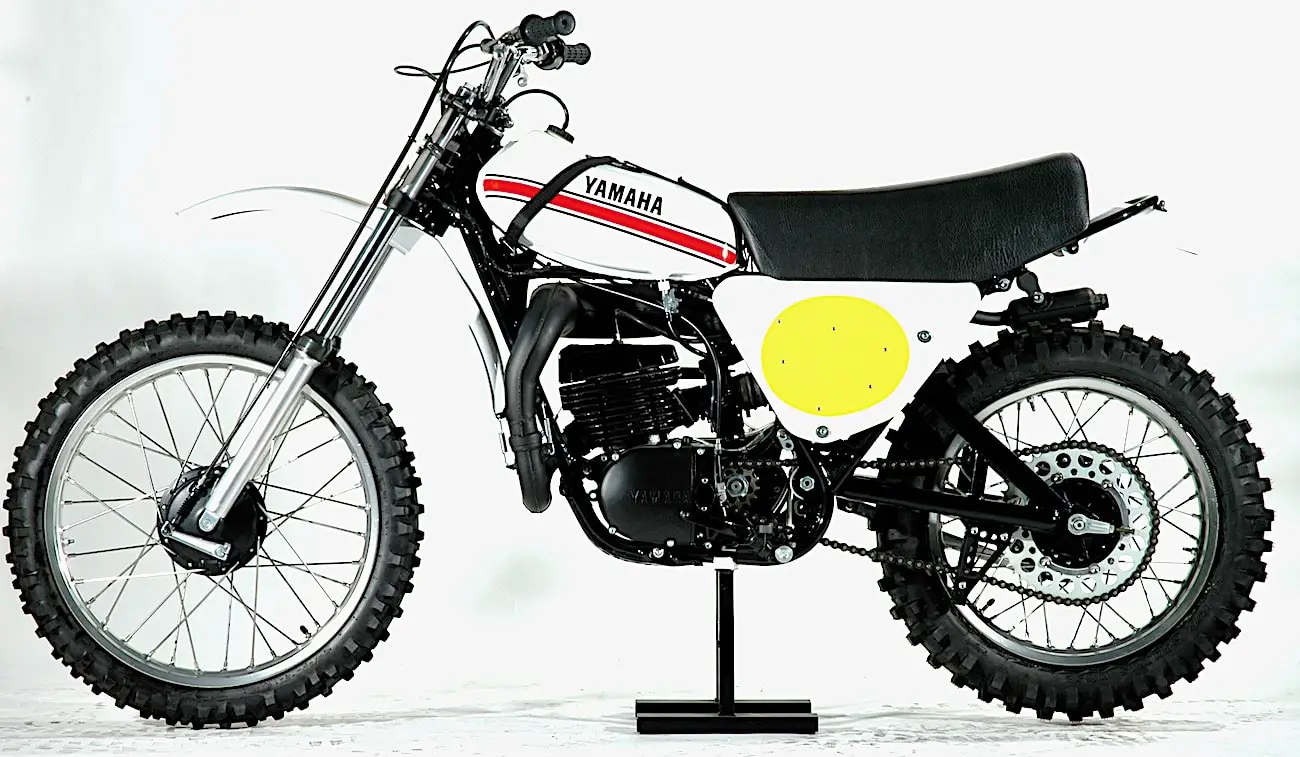CLASSIC MOTOCROSS IRON: 1974 YAMAHA YZ360B MONOSHOCK

BY TOM WHITE
The first single-shock motocross suspension design, the Monoshock, was introduced in 1974 but not sold until 1975. The YZ250B and YZ360Bs would, in time, change the way motocross motorcycles were designed and built. Although the other brands didn’t adopt the single-shock concept for another five years‚ the Monoshock set the stage.

Belgium designer Lucien Tilkens, who was an engineering professor at the University of Liege from 1951 until 1968, came up with the Monoshock idea after watching his son Guy crash at a local race on a twin-shock CZ in 1972. Lucien determined that the crash was caused by the vertical mounting of the CZ’s twin shocks and, with quick mental calculations, figured that if the shocks were aligned with the steering head instead of vertically, the forces would be dissipated. Although his reasoning was flawed, because it was the short travel that caused Guy’s crash, Lucien’s solution was groundbreaking. Tilkens was friends with Roger DeCoster and Sylvain Geboers, but used his son Guy as his test rider. Guy Tilkens, who was a mechanical engineering student at the time, was the first to race his father’s Monoshock CZ.
 Sylvain Geboers on the prototype Suzuki monoshock. Photo: Terry Good Collection
Sylvain Geboers on the prototype Suzuki monoshock. Photo: Terry Good Collection
Guy’s CZ attracted a lot of attention, and soon after, Suzuki approached Tilkens about building a Suzuki version for Roger DeCoster and Sylvain Geboers to test. Roger loved the concept and pushed Suzuki to buy the design, but Suzuki’s head engineer, Mr. Tamaki, rejected the idea. Almost immediately, Yamaha showed up at Tilkens’ house and bought the rights. Lucien Tilkens gave Suzuki seven days to make a counter-offer, but they did not respond. Tilkens sold his patent to Yamaha and designed Yamaha a works prototype that Hakan Andersson won the 1973 250 World Championship on.

Late in 1974, a special run of Yamaha YZ250B and YZ360B Monoshocks were brought to America. The 1000 units were earmarked for expert riders, who were supposed to be handpicked by each local Yamaha dealer. The engine, brakes and forks were similar to the previous year’s YZ-A models, but featured drilled and lightened hardware, magnesium components and a strap-on gas tank. The YZ-B models had nicely sculptured aluminum fuel tanks held on by straps. The airbox was made out of fiberglass, as were the side panels. To save weight, almost all bolts had dished-out heads; the lower fork legs were turned down, and no side stand was included. The YZ125 Monoshocks were introduced in late 1975 as 1976 models. There never was a suggested retail price for the YZ250B and YZ360B. At my dealership, Orange County Cycle, the lucky expert riders who were deemed worthy paid $1595 for the 250 and $1750 for the 360.
Six months later, Yamaha introduced the 1975 MX250 and MX400B models. Not nearly as trick as the YZ-Bs, they were priced lower, and Yamaha enjoyed a sales boost because of the Monoshock idea and Hakan Anderson’s success.






Comments are closed.